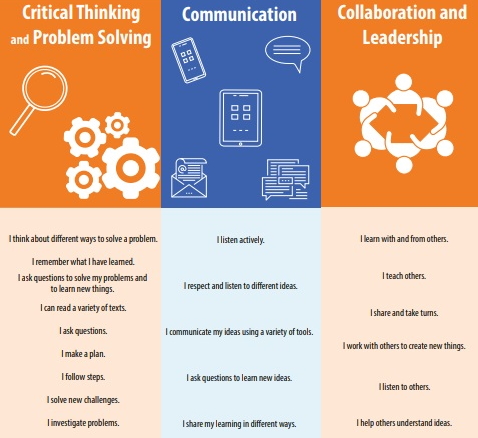
By Zoe Flatman
My predecessor at Rapport, Risa Gluskin, chronicled her journey to revise and update her teaching and assessment practices. In that spirit, I wanted to share some of my thinking around my journey to revamp assessment and evaluation in my CIA4U classes. As a subject that contains a fair bit of theory, how can students really show not just comprehension, but application and competency that extends beyond just the “theoretical problem sets”, formulae and graphs?
In an effort to improve assessment and evaluation I have been experimenting with moving away from traditional evaluation tools (read “The Test”) in my Grade 12 Economics classes and instead incorporating global competencies into formal evaluation. So what does that mean? For me it means evaluating students in more collaborative, critical thinking and problem solving ways that require application of global citizenship characteristics. Okay, that sounds fancy and all, but what does it actually look like? Simply put, instead of giving an “essay question” on a test, students work in small groups to discuss an issue related to the curriculum. Groups can be given different issues so that the responses require critical thinking and application of the concepts learned. This leads to more variety and prevents listening to other groups and copying ideas. They are recorded using department iPads and a free voice recording app. I then listen to the recordings and students are evaluated on content, as well as assessed for the above competencies. This can be followed by a written reflection using prompts which help to gauge individual student learning.
It does take some time to practice and adapt, but the expectations are made clear and practiced throughout the learning. Having students work together, discuss, collaborate on issues ahead of time, of course, is part of the process. There are rules including ensuring that each student must only make 1 point at a time and cannot speak again until all of the other students have spoken. Students can be numbered to facilitate the round robin style of contributions, and the order can be changed each time they are “tested”. This way, different people can start the discussion which is both an advantage (no one else has said your point) and a disadvantage (what if my point isn’t “good”?). As with all of this messiness, students improve over time and gain confidence and competence. They can question, respond, disagree, or add extra data/examples to a point already given. The purpose is to have students experience collective problem solving in a collaborative manner. That is, sharing in the development of a solution. As such, all students don’t have to agree, but a consensus approach which leads to a recommendation (or 2) is the goal.
Wrinkles:
- Student confidence and personality clashes
Groups can be organized by the teacher to respect personalities, for example, there may be a very introverted student who might feel overwhelmed by a very extroverted colleague. The teacher may wish to minimize potential clashes in the early stages. As the course progresses and students are more comfortable with the format and have experienced success, the teacher can challenge them with more mixed groupings. The goal is to build student confidence and competence through success.
- Preparing/ studying
The point is to have students apply and communicate their understanding. Initially, the issue/question could be given in advance, but this can lead to the same sort of regurgitation of theory that we are trying to avoid. Putting students in groups, giving the question/problem and allowing for 10 minutes to think and write notes or ideas before beginning their discussion will allow for a more fulsome discussion where students are encouraged to listen for understanding rather than listening to respond.
Payoff:
It is an adjustment, but I find the discussions much more interesting than reading the same canned responses on a written test. Students also become more comfortable and confident enough to engage in conversation. When they bring in information, ideas, etc. from another course it is even better! While disciplinary thinking concepts provide a neat model for approaching events and issues, we want students to develop big picture thinking and interdisciplinary approaches.


